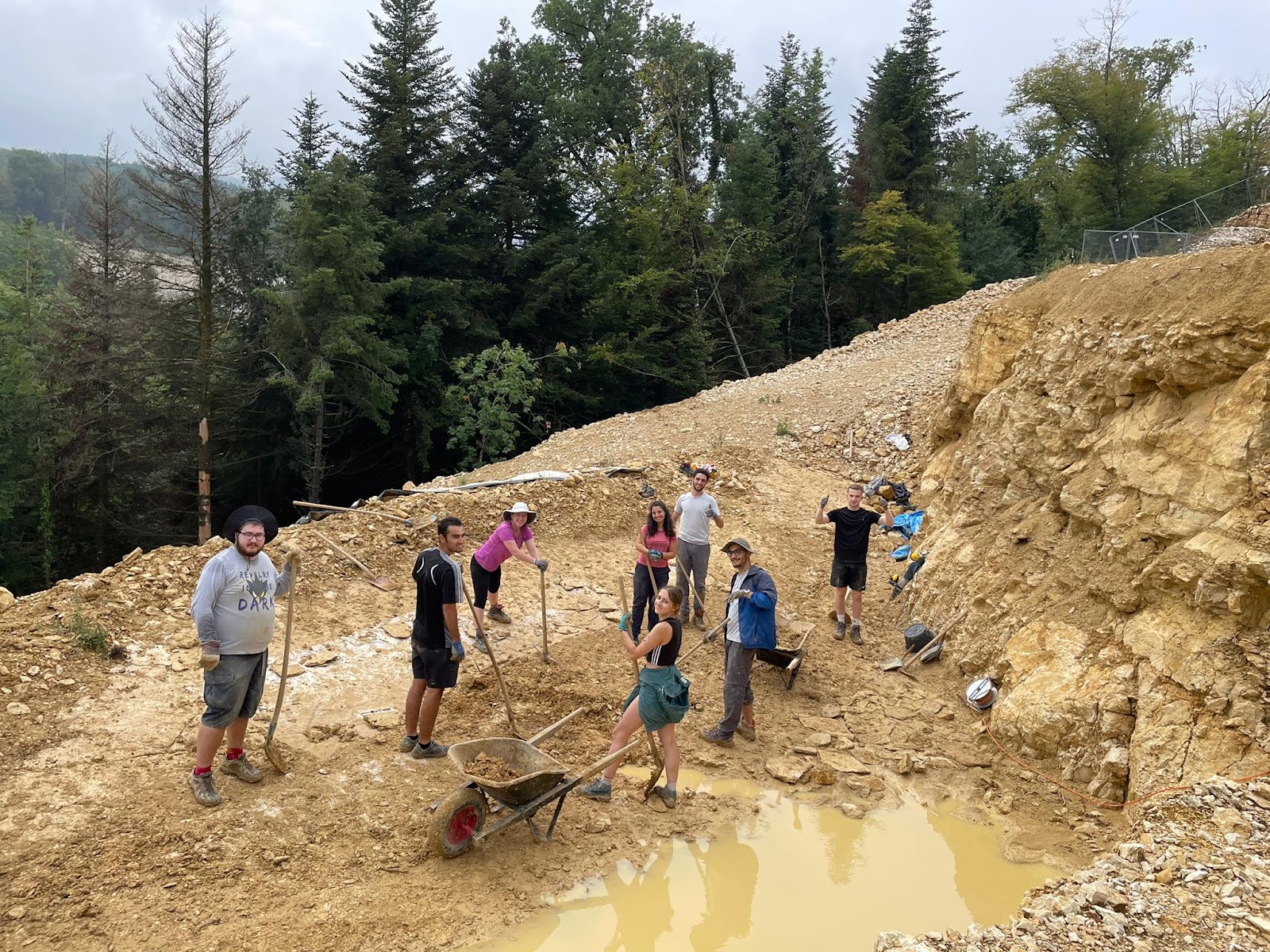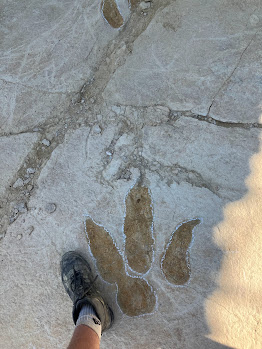Jurassica Field School 2022
In the second half of August 2022, I was very privileged to be a part of the Jurassica Field School 2022, ran by the Jurassica Museum and the University of Florence. I spent 2 weeks as part of a team consisting of 15 other young Palaeontologists from France, Italy, Spain, Switzerland and the UK.
After a sleepless night at Gatwick Airport, a 2-hour plane delay, and an afternoon of sightseeing in Basel, I met up with my new peers in Porrentruy, before heading to our cosy accommodation in Mormont, a tiny rural village in the canton of Jura in Northern Switzerland.
The following day was our first day in the field, at the Kimmeridgian Reuchenette Formation, a 15-minute drive from Mormont. The first day was naturally an introduction to the techniques that we would be using over the next 2 weeks, as well as clearing up some of the debris that had accumulated since the field school had visited in the previous year.
Our team excavated on two separate layers. The lower limestone layer contained medium-large Theropod footprints and the upper layer, consisting of limestone marls contained fragments of marine specimens such as crocodiles, turtles, bivalves, fish, oysters and ammonites.
The Marls layer, where the team was led by turtle expert, Dr Jeremy Anquetin, proved to be the more tedious of the two, as there wasn't much to shout about in the first week of the expedition, apart from a few turtle bone fragments and enough bivalves to fill a Jurassic ocean. Our hard work did however pay off in the second week, as discoveries included specimens such as teeth from crocodiles and fish as well as larger turtle fragments. In typical fieldwork fashion, perhaps the most impressive find of the expedition wasn't discovered by part of the team, but by a visitor to the site on the open day. They found a beautifully preserved Thalattosuchia tooth sat on top of the surface in the one part of the site that no one else had thought to look. Typical!
Examples of specimens found in the marls layer on one of the more successful days of the expedition.
The team hard at work on the Marls layer, overlooking the limestone quarry.
The lower footprint layer was looked after by Ichnologist, Dr Lara Sciscio. This was the more labour-intensive part of the site, with the use of power drills, hammers, picks, shovels and brooms needed to carefully excavate the thin rock layer between the surface and the Theropod footprints. The first few days on this layer were spent clearing away the rocks that held down the tar pooling which protected the finds from last year.
Part of the team helping to clear rock from the footprint layer.
Over 10 separate footprints were discovered on the expedition, all of which belonging to Theropod dinosaurs. Fossil remains have been found near this site of a Ceratosaurian dinosaur, dating to the same geological period, so it is likely that they may belong to a genus from this clade.
One of the theropod footprints found at the site, compared with my size 7 shoe.





Comments
Post a Comment